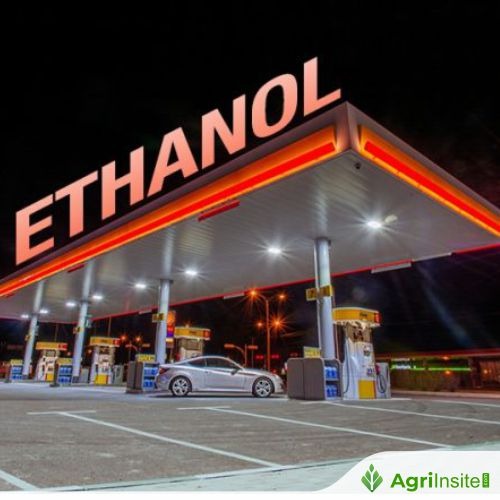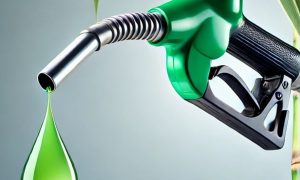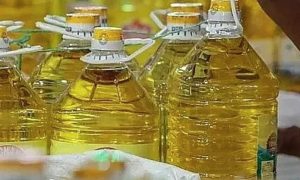India’s ethanol push spurs shift from oilseeds to corn, risking higher cooking oil imports

India’s ethanol push is diverting farmers from oilseeds to corn and rice, as cheap DDGS from biofuel production floods the feed market. This depresses oilseed prices, reducing acreage and boosting edible oil imports. Experts warn rising imports could undermine New Delhi’s self-sufficiency goals and drive global prices higher.
India’s drive to produce more ethanol is leading its farmers to switch away from growing oilseeds, undermining government efforts in the world’s largest buyer of cooking oils to reduce costly imports.
Helped by record corn and rice harvests, New Delhi is using more of the grains to make ethanol and meet its target of blending 20% of the biofuel additive with gasoline. The process, however, produces Distillers Dried Grains with Solubles (DDGS), a protein-rich byproduct that is flooding the animal feed market.
The DDGS glut is weakening demand for oilmeals, depressing oilseed prices and prompting farmers in the South Asian nation to plant more corn and rice in place of soybeans and groundnuts – despite New Delhi’s push to grow more of the oilseeds to ease imports.
DDGS production in India has soared some 13-fold over the past two years to an estimated 5.5 million tons by 2025, according to industry officials.
“DDGS is a pain in the neck,” said Aashish Acharya, vice president at Patanjali Foods Ltd, a leading soybean processor. “Feed makers are substituting oilmeals with DDGS since it is cheaper.”
The shift is visible in government sowing data. As of August 8, oilseed acreage – including soybean and groundnut – was down 4% from last year, while corn area jumped 10.5% to a record high.
Madhukar Londhe, a farmer in Nashik in the western state of Maharashtra, said he had cut his soybean area to one acre from six, planting the rest with corn – which has the added benefit of providing fodder from its stalks for his five milking cows.
Nearly two dozen farmers in the area that Reuters spoke to said they had made a similar switch.
“Soybean prices were too low, so I couldn’t even cover my costs in the past two years. Corn did better for me last year, so I’ve decided to grow more of it,” Londhe said.
Rising imports
The reduction in oilseed planting is a concern for a country that spent more than $17 billion on edible oil imports last year and is making concerted efforts to reduce that dependence.
Rising demand for fried foods and sweets by a growing and increasingly prosperous population has driven consistent growth in edible oil consumption at 3%-4% annually, said B.V. Mehta, executive director of the Solvent Extractors’ Association of India.
Edible oil imports have climbed to 16 million tons in 2023-24 from 4.4 million tons two decades ago, making India the world’s largest buyer of vegetable oils such as palm oil from Indonesia and Malaysia and soyoil and sunflower oil from Argentina, Brazil, Russia, and Ukraine.
New Delhi aims to boost domestic edible oil production to 25.45 million tons by 2030–31 from 12.7 million tons now, enough to meet 72% of projected demand, an effort that Mehta said is being hindered by the surge in DDGS supply.
A New Delhi-based senior dealer with a global trading house who declined to be named as he is not authorised to speak with media said he expects imports to rise above 20 million tons in six or seven years, due in part to the DDGS disruption.
Given the tightening global supplies of edible oils, India’s additional imports will drive prices even higher, said a Kuala Lumpur-based official with a leading palm oil-producing company.
Meal glut, oil deficiency
India, the No. 3 importer and consumer of crude, recently hit its goal of lifting ethanol blending in gasoline to 20%. Two years ago, before India began using corn and rice on a large scale due to short supply of its main ethanol feedstock sugarcane, its blending rate was just 12%.
Even before rising ethanol production began to create excess DDGS, India struggled with surplus oilmeals. Per capita demand for animal feed is much lower than the global average as a significant portion of its 1.4 billion population is vegetarian for religious and cultural reasons and most meat-eaters do so only occasionally.
That led India to export surplus oilmeals to countries such as South Korea, Vietnam, Thailand, and Bangladesh.
However, oilmeal exports got tougher every year as prices rose in order to support oilseed farmers. This year, some countries that import Indian meal have committed to buying more from the U.S., meaning they will buy less from India, said a Mumbai-based dealer with a global trading house.
Ajay Jhunjhunwala, an oil miller in Lucknow in northern India, estimates that of this year’s DDGS output, only around half will be consumed domestically.
Exports are growing but are still relatively small. India’s DDGS exports surged to 354,110 tons last year from just 16,556 tons in 2022. Distilleries are trying to export the surplus to markets including Bangladesh and Vietnam – longtime U.S. DDGS customers.
Millers and distillers are pushing for incentives to facilitate exports of both oilmeals and DDGS.
India’s Agriculture Minister Shivraj Singh Chouhan said in July the government would support oilseed farmers by procuring their harvest at a state-fixed price. The Indian government did not respond to a request for comment on rising supplies of DDGS.
“DDGS has exaggerated the problem of surplus meal,” oil miller Jhunjhunwala said. “Unless that problem is fixed, increasing domestic oilseed production and edible oil supplies is difficult,” he said.
To Read more about Ethanol Industry & Bio Energy News, continue reading Agriinsite.com
Source : The Telegraph Online














